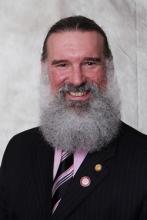Millions of Americans can now purchase health insurance through the federal and state exchanges. But while interest is high, no one knows for sure just how many people will end up enrolling in a plan.
And the bigger question for physicians is how many patients will show up in their offices early next year when coverage starts.
The answer may depend on where you live, according to Paul B. Ginsburg, Ph.D., an economist and president of the Center for Studying Health System Change.
Multiple factors dictate demand
States with the highest number of uninsured residents are likely to have the most people entering the insurance market, Dr. Ginsburg said. But the expansion of Medicaid is also a factor.
As originally enacted, much of the increased insurance coverage under the Affordable Care Act was to come from the expansion of Medicaid. That changed when the Supreme Court gave states the choice of whether or not to expand eligibility for their programs; so far 25 states are actively moving forward with expansion.
Texas has one of the highest rates of uninsurance in the nation, but is not expanding its Medicaid program. Arkansas, Arizona, and New Mexico – all with high rates of uninsurance – are.
The exchanges will allow some patients in the system – who are currently without coverage – to gain insurance, said Dr. Reid B. Blackwelder, president of the American Academy of Family Physicians (AAFP). This should provide some relief for struggling physicians, he said.
In a survey of members, the AAFP found that family physicians provide free or reduced rate visits for uninsured or underinsured patients an average of 10 times a week.
"A lot of the folks that will get insurance are already in the system," Dr. Blackwelder said. "They are already being cared for, but cost the system money. This will actually help."
Tough for solo practices
So who will be coming through the front door? Experts say it will be both the sick and the healthy.
The ACA’s preventive care benefits make it easier for healthy patients to come in for mammograms and colonoscopies, said Jennifer Caudle, D.O., of Washington Township, N.J. But she predicted that physicians will also see patients who have been out of the health care system for years and have uncontrolled chronic illnesses.
That’s what Dr. Richard Dupee saw when Massachusetts enacted its health reform law in 2006.
"Some pretty serious train wrecks came in here," said Dr. Dupee, a solo primary care physician in Wellesley and president of the Massachusetts chapter of the American Geriatrics Society. Overall, he added, Massachusetts is seeing better outcomes for conditions such as diabetes. But the downside is that physicians still don’t get paid adequately to provide intensive visits.
"There’s no such thing as the 1-hour doctor visit anymore because no one will pay for it," he said.
At his office, which operates as a patient-centered medical home, they work to get complex patients to come in for a series of visits and have them seen initially by either a nurse practitioner or a physician assistant.
Dr. Dupee recommended that physicians who believe they will see an influx of new, potentially sicker patients consider restructuring the way they provide care.
"If you’re a single doc, you can’t do it," he said.
Redesigning care
Dr. Blackwelder suggested that practices will need to look at different ways to meet patients’ needs.
For example, a patient may come to the office with a list of 10 or so questions that he or she would like addressed in a single visit. If the physician has an online patient portal that links to the electronic health record, the patient could winnow that list by viewing lab results and requesting medical refills outside of the office visit structure.
"What we can do, if we’re being effective, is perhaps handle six or seven of those 10 things differently so that when [patients] come in, we now don’t feel as pressured and we can focus on whatever is most important," he said. "We get more bang for our buck during that time."
Using existing staff effectively also will be important, according to Dr. Douglas Curran of Athens, Tex.
Dr. Curran, who is part of a 14-physician group, has no plans to make significant investments in staff or technology. "We’ve got enough flexibility," he said. "We think we can accommodate a lot of these patients."
Instead, he’s talking to insurers to figure out which health plans will be available in his area and he’s talking to patients to find out who is signing up for insurance.



